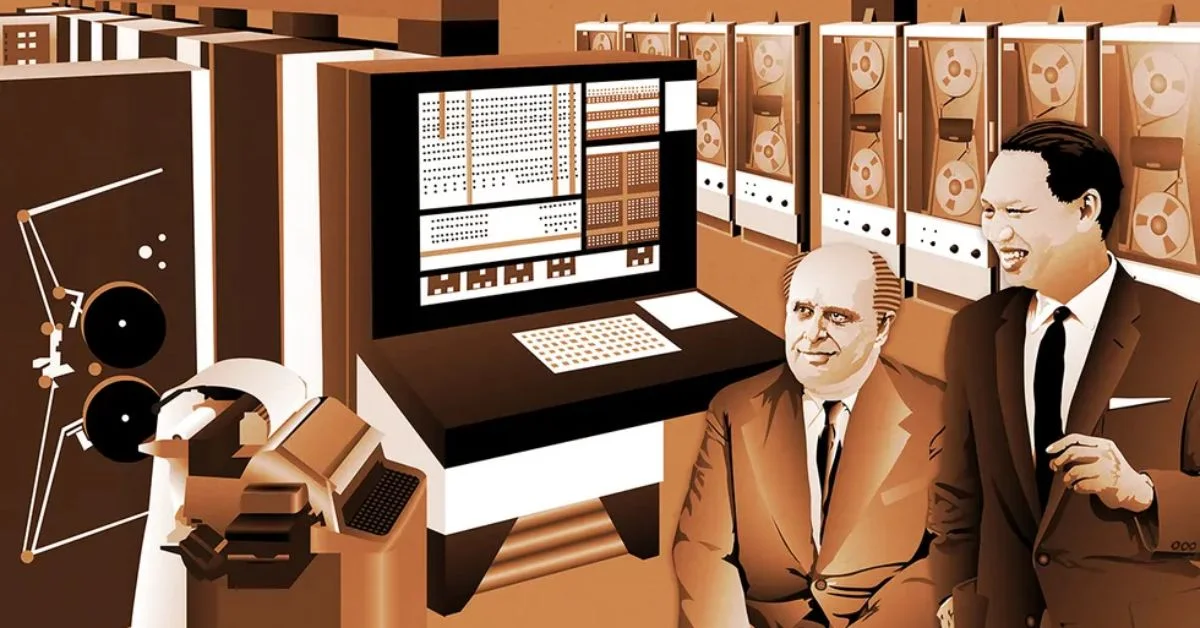In the tapestry of human progress, Technology stands as the loom weaving together innovation, knowledge, and transformation. The digital age has unfurled a breathtaking array of technological marvels, each thread contributing to the rich fabric of modern life. Our journey through the diverse landscapes of Types of Technology promises to unveil the intricate patterns and vibrant colors that define our technologically driven world.
From the bytes and algorithms of Information Technology (IT) to the boundless expanse of Space Technology, we traverse domains that shape our society and shape our future. In the laboratory, the clinic, and beyond, Biotechnology and Medical Technology pioneer new frontiers in healthcare, while Green Technology champions sustainability in an era of environmental consciousness.
In the realm of mobility, Transportation Technology propels us toward electric horizons and self-driving possibilities. The digital classroom, powered by Educational Technology, brings learning to the farthest corners of the globe. Meanwhile, Digital Technology saturates our existence, impacting how we communicate, work, and unwind.
At the pinnacle of innovation, Artificial Intelligence (AI) casts a spell of endless possibilities, guided by machines that learn, adapt, and envision. Renewable Energy Technology unfurls vast energy solutions, and Entertainment Technology immerses us in virtual worlds of joy and wonder. As sentinels of defense, Military Technology safeguards nations, yet raises ethical questions that challenge our path forward.
Emerging technologies like quantum computing and 5G beckon us toward uncharted territories, bearing the weight of our aspirations and the responsibility of ethical stewardship. As we navigate this labyrinth of innovation, we must remember that the impact of technology on society is profound, echoing through our daily routines, our economies, and our global interconnectedness. It is a journey that demands a balance of progress and ethical responsibility, for in our hands, technology has the power to illuminate the path to a brighter future.
Contents
Introduction to Types of Technology
In today’s rapidly evolving world, technology is the driving force behind the incredible advancements that shape our lives. It’s not just a tool; it’s a dynamic force that has revolutionized how we live, work, and communicate. Let’s embark on a journey to explore the vast landscape of technology, from the Information Age to the cutting-edge innovations of tomorrow. As we delve into the world of technology, we’ll discover how it touches every aspect of our modern society.
Defining Technology
Technology, in its simplest form, refers to the application of scientific knowledge to create tools and systems that simplify and improve our lives. It encompasses a wide range of innovations that span from the digital realm to the biological, each serving a unique purpose. Technology is the bridge between our imaginations and reality, enabling us to achieve what was once considered impossible.
The Role of Technology in Modern Society
Technology isn’t just a convenience; it’s the cornerstone of modern society. It powers our homes, drives our economy, and connects us to the world. From the moment we wake up and check our smartphones to the automated systems that ensure our cities run smoothly, technology is an inseparable part of our daily lives. It empowers individuals, transforms industries, and propels nations forward. The impact of technology is profound, touching fields as diverse as healthcare, transportation, education, and entertainment.
Now, let’s embark on a journey through the diverse types of technology that shape our world.
1. Information Technology

What is Information Technology?
Information Technology (IT) is the cornerstone of the digital age. It encompasses everything from hardware like computers and servers to software, networks, and data management systems. IT Technology has revolutionized the way we access and process information. It drives businesses, governments, and individuals to new heights of efficiency and connectivity. With the advent of cloud computing and the Internet of Things (IoT), the scope of IT continues to expand, offering limitless possibilities.
Key Components of IT
IT comprises various essential components, including cybersecurity measures that protect sensitive data, cloud computing infrastructure for scalable and accessible data storage, and data analytics tools for deriving insights from vast datasets. Machine learning and artificial intelligence (AI) are reshaping IT by automating tasks, enhancing decision-making, and enabling the development of smart systems. IT isn’t just about gadgets and codes; it’s about harnessing the power of information to shape our future.
Applications and Impact of IT
The applications of IT are virtually boundless. From the convenience of smartphones to the efficiency of automated factories, IT touches every aspect of our lives. It drives economic growth, fosters global communication, and has even been instrumental in combating challenges like the COVID-19 pandemic through telemedicine and remote work solutions. Its impact on education is immeasurable, providing access to information and resources like never before. As we navigate the digital era, it’s crucial to balance the benefits of IT with the need for ethical and secure practices.
These Technologies are included in information technology:
- Hardware
- Software
- Networks
- Databases
- Cloud computing
- Big data
- Artificial intelligence (AI)
- Machine learning
- Cybersecurity
2. Communication Technology

What is Communication Technology?
Communication technology encompasses the tools and systems that enable us to connect and share information across vast distances. It’s the technology that makes the global village a reality. From the early telegraph to today’s high-speed internet and mobile networks, communication technology has come a long way. It includes 5G networks that promise lightning-fast connections, and the Internet of Things (IoT), which interconnects devices for seamless communication.
Evolution of Communication Tools
Communication technology has a rich history. It has evolved from Morse code and telephones to video conferencing and social media platforms. Virtual reality (VR) and augmented reality (AR) are pushing the boundaries of immersive communication. We’ve witnessed the birth of the World Wide Web (WWW), which transformed the way we access and share information. Google, as a search giant, plays a pivotal role in connecting people to the vast realm of the internet, while Facebook (Meta Platforms, Inc.) has redefined how we socialize online.
The Future of Communication Technology
The future of communication technology is filled with excitement. AI-driven chatbots and voice assistants are making interactions more intuitive. With blockchain, communication is becoming more secure and transparent. Satellite technology is extending connectivity to remote areas, bridging the digital divide. As we look ahead, it’s not just about faster downloads; it’s about reimagining how we collaborate, learn, and interact in a world that’s more interconnected than ever before.
These Technologies are included in Communication Technology:
- Telephones
- computers
- The Internet
- social media
3. Biotechnology
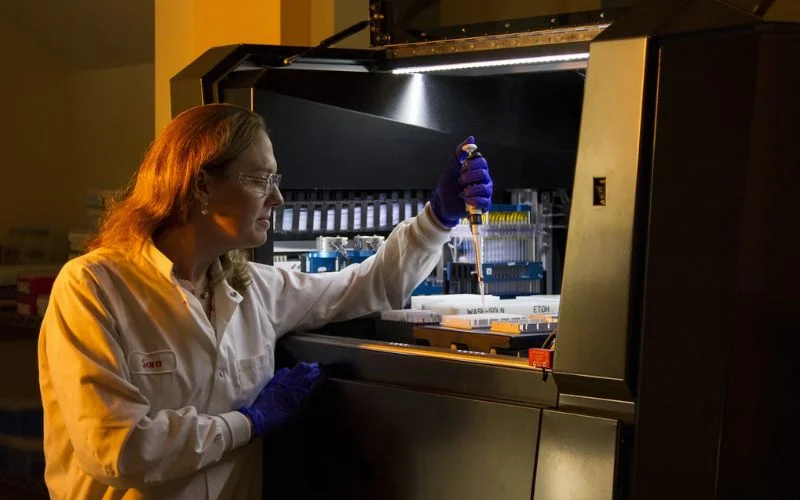
What is Biotechnology?
Biotechnology is the fusion of biology and technology, with the aim of improving life through innovation. It encompasses the manipulation of living organisms and biological systems for practical applications. Biotechnology plays a pivotal role in medicine, agriculture, and environmental conservation. Genetic engineering, a subset of biotechnology, empowers scientists to modify the genetic makeup of organisms for various purposes, such as creating disease-resistant crops or developing life-saving medications. This field holds immense promise in addressing some of humanity’s most pressing challenges.
Applications in Medicine and Agriculture
In medicine, biotechnology has revolutionized healthcare by enabling the production of biopharmaceuticals, such as insulin and vaccines, through biomedical devices. It has also paved the way for personalized medicine, tailoring treatments to an individual’s genetic makeup. In agriculture, biotechnology has led to the development of genetically modified organisms (GMOs), which have the potential to increase crop yields, reduce pesticide use, and enhance food security. However, ethical considerations surrounding the use of GMOs and genetic engineering remain a subject of debate.
Ethical Considerations in Biotechnology
With great power comes great responsibility. The ethical considerations in biotechnology are multifaceted. They encompass issues related to genetic privacy, the potential for misuse of biotechnological tools, and the need for transparent regulation. Striking a balance between innovation and ethics is crucial as we navigate the ever-expanding frontier of biotechnology.
4. Medical Technology

What is Medical Technology?
Medical technology is a lifeline that has transformed healthcare, improving diagnosis, treatment, and patient outcomes. From telemedicine that allows remote consultations to biomedical devices that monitor vital signs, the integration of technology in medicine has saved countless lives. Innovations such as robotic surgery have made procedures less invasive and more precise, reducing recovery times and post-operative complications. The synergy of technology and medicine continues to push the boundaries of what’s possible.
Medical Devices and Diagnostics
Medical technology encompasses a wide range of devices, from the humble stethoscope to complex imaging machines like MRI and CT scanners. These tools enable healthcare professionals to diagnose conditions with unprecedented accuracy. Wearable devices, such as smartwatches, are revolutionizing preventative care by continuously monitoring health metrics. Moreover, advances in genetic engineering have opened the door to gene therapy, offering potential cures for genetic disorders.
Telemedicine and Healthcare Technology
Telemedicine, fueled by high-speed internet and mobile technology, has made healthcare accessible to remote and underserved areas. Patients can now consult with specialists from the comfort of their homes, enhancing the quality of care. The use of AI in healthcare, particularly in diagnostics and treatment recommendations, holds immense promise for improving outcomes and reducing costs. However, it also raises questions about data privacy and algorithmic bias, underscoring the need for responsible AI implementation.
These Technologies are included in Medical Technology:
- X-rays
- MRI machines
- Pacemakers
5. Green Technology
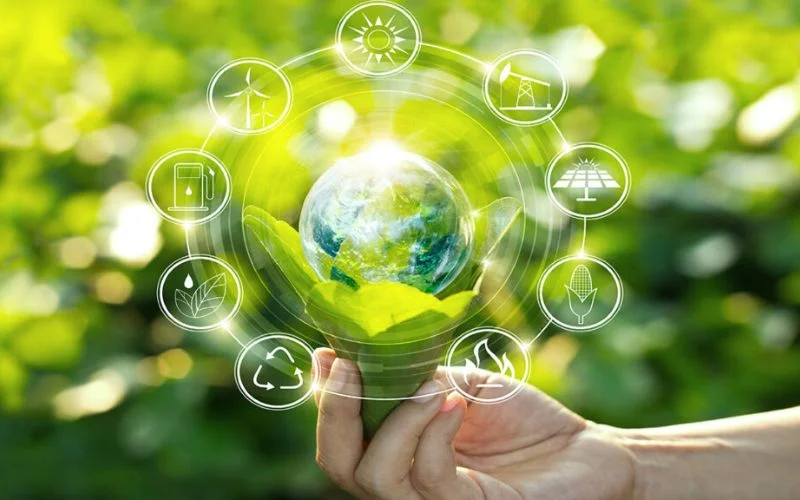
What is Green Technology?
In an era marked by environmental concerns, green technology emerges as a beacon of hope. This type of technology is dedicated to minimizing the ecological footprint of human activities. Green technology includes innovations such as renewable energy sources like solar, wind, and hydropower, which harness the Earth’s natural resources to meet our energy needs sustainably. Additionally, technologies like electric vehicles (EVs) promise to revolutionize the automotive industry by reducing greenhouse gas emissions and reliance on fossil fuels.
Renewable Energy Technologies
The transition to renewable energy technologies is vital for combating climate change. Solar panels, for instance, capture sunlight and convert it into electricity, offering a clean and renewable energy source. Wind turbines harness the power of the wind to generate electricity, while hydropower utilizes the energy of flowing water. These technologies not only reduce carbon emissions but also promote energy independence and create green jobs.
Environmental Benefits of Green Tech
Beyond energy production, green technology extends to waste management, water purification, and sustainable agriculture. Waste-to-energy facilities convert organic waste into clean energy, reducing landfill usage and mitigating pollution. Sustainable farming practices, enabled by biotechnology and precision agriculture, minimize the environmental impact of food production. Overall, green technology offers a pathway to a more sustainable and eco-friendly future.
6. Transportation Technology

What is Transportation Technology?
Transportation technology is the backbone of modern mobility, shaping the way we move people and goods across the globe. From the invention of the wheel to the development of high-speed trains and electric vehicles, transportation technology has continuously evolved to meet our ever-growing demands. It’s not just about getting from point A to B; it’s about doing so efficiently and sustainably. The integration of technology in transportation has led to safer, faster, and more environmentally friendly modes of travel.
Electric Vehicles and Autonomous Driving
Electric vehicles (EVs) represent a significant shift in the automotive industry towards sustainability. With their zero-emission capabilities and advancements in battery technology, EVs are reducing our reliance on fossil fuels. Additionally, the rise of autonomous driving technology is poised to revolutionize transportation safety and convenience. Self-driving cars equipped with AI and sensors have the potential to significantly reduce accidents and traffic congestion, while also offering greater accessibility for individuals with disabilities.
Future of Transportation Technology
Looking ahead, the future of transportation technology is brimming with possibilities. Hyperloop systems promise to transport passengers at near-supersonic speeds, revolutionizing long-distance travel. Urban air mobility, facilitated by drone technology, may soon offer aerial transportation solutions for congested city centers. Furthermore, the development of high-speed trains and smart cities that prioritize public transportation and reduce traffic congestion is redefining the urban landscape. Transportation technology is not only about convenience; it’s about sustainability, accessibility, and creating a better future for all.
These Technologies are included in Transportation Technology:
- Cars
- Airplanes
- Trains
- Ships
7. Educational Technology

What is EdTech and Learning?
Educational technology, commonly referred to as EdTech, is transforming the way we learn and acquire knowledge. In a digital age, learning goes beyond the confines of traditional classrooms. EdTech encompasses a wide array of tools, including e-learning platforms, interactive apps, and online courses. These technologies provide flexible and personalized learning experiences that cater to diverse needs and abilities. From elementary education to lifelong learning, EdTech has the potential to democratize education and bridge educational disparities.
Online Education Platforms
The rise of online education platforms, often powered by cloud computing and high-speed internet, has made learning accessible to people worldwide. Platforms like Coursera and edX offer courses from renowned universities, allowing learners to upskill and reskill in a rapidly changing job market. EdTech also plays a crucial role in K-12 education, offering interactive lessons, gamified content, and remote learning solutions, particularly in times of crisis such as the COVID-19 pandemic.
Impact of Technology on Education
The impact of technology on education extends beyond the classroom. It has given rise to the concept of lifelong learning, where individuals can continuously acquire new skills and knowledge throughout their lives. Moreover, data analytics and AI-driven tools enable educators to track student progress and tailor instruction to individual needs. However, the integration of technology in education also raises concerns about privacy, accessibility, and the digital divide. Balancing the benefits of EdTech with ethical considerations is key to harnessing its full potential.
8. Digital Technology

What is Digitalization in Everyday Life?
Digital technology has permeated every aspect of modern life, from our personal interactions to our professional endeavors. It has fundamentally changed how we communicate, work, and entertain ourselves. The proliferation of smartphones and mobile technology has put the world at our fingertips, connecting us instantly to information and people. As we embrace digitalization, we navigate an ever-expanding digital landscape where convenience and connectivity are paramount.
Digital Media and Entertainment
The realm of digital technology extends to the media and entertainment industry. Streaming platforms like Netflix have transformed how we consume content, offering on-demand access to a vast library of movies and shows. Social media, a product of digital innovation, has redefined how we connect and share experiences. Moreover, the advent of virtual reality (VR) and augmented reality (AR) is immersing us in new forms of entertainment, from immersive gaming experiences to virtual tourism.
Cybersecurity in the Digital Age
As we embrace digital technology, we must also be vigilant about cybersecurity. The digital age has given rise to new threats, from data breaches to cyberattacks. Cybersecurity is a critical aspect of digitalization, ensuring the protection of sensitive information and critical infrastructure. Advances in encryption, threat detection, and security protocols are essential to safeguarding our digital lives.
9. Space Technology
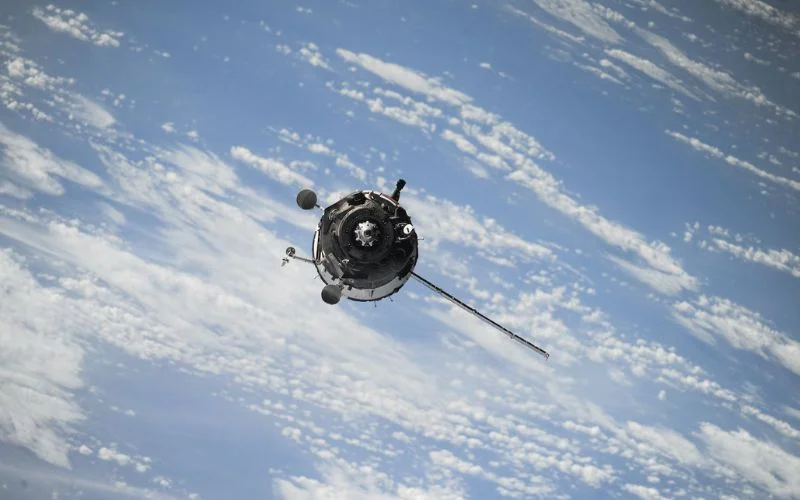
What is Space Exploration Technology?
Space technology represents humanity’s quest to explore the cosmos and understand the universe beyond our planet. SpaceX, founded by visionary entrepreneur Elon Musk, has made significant strides in this field. Their reusable rockets have drastically reduced the cost of space travel, making it more accessible. Additionally, organizations like NASA have pioneered advancements in space exploration technology, such as the Mars rovers and the International Space Station (ISS).
Satellites and Communication in Space
One of the key applications of space technology is the deployment of satellites. These man-made marvels orbit the Earth, providing communication, navigation, weather forecasting, and scientific data collection. They facilitate global connectivity and are integral to technologies like GPS. Furthermore, satellite technology plays a pivotal role in disaster management, allowing us to monitor and respond to natural disasters with precision.
Space Agencies and Missions
Various space agencies, including NASA, ESA (European Space Agency), and Roscosmos, collaborate on international missions that expand our understanding of space. Missions to distant planets like Mars and Jupiter, as well as deep space exploration, are pushing the boundaries of space technology. Moreover, private companies like SpaceX and Blue Origin are working on ambitious projects, including Mars colonization and lunar missions, further propelling space technology into the future.
These Technologies are included in Space Technology:
- Satellites
- Rockets
- Rovers
10. Nanotechnology

What is Nanotechnology?
Nanotechnology operates on the scale of nanometers, where atoms and molecules are manipulated to create materials and devices with unique properties. It’s a field of science that has far-reaching applications in medicine, electronics, and materials science. Nanomaterials, which exhibit remarkable strength, conductivity, and other properties, are revolutionizing industries.
Nanomaterials and Applications
The applications of nanotechnology are diverse and promising. In medicine, nanoscale drug delivery systems are enabling targeted therapies, minimizing side effects, and improving patient outcomes. In electronics, microelectronics benefits from nanoscale transistors and semiconductors that drive the development of smaller and more powerful devices. The potential of nanotechnology in materials science is immense, with innovations like lightweight and super-strong nanocomposites.
Potential Impacts of Nanotech
While nanotechnology holds great promise, it also raises ethical and safety concerns. Ensuring the safe use of nanomaterials is crucial to prevent unintended consequences. Moreover, the development of self-replicating nanomachines, while theoretically possible, demands careful consideration of the potential risks and benefits. Nanotechnology represents the convergence of science and engineering at the atomic and molecular levels, opening up new frontiers of innovation.
11. Robotics
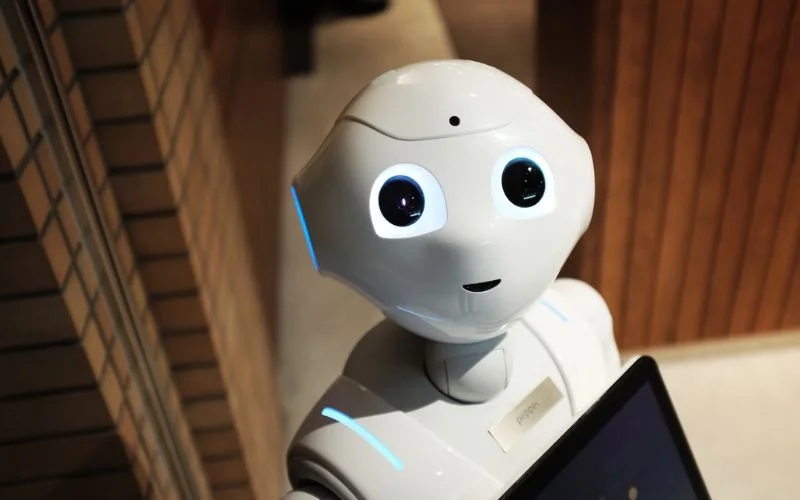
Robotics in Various Industries
Robotics is the embodiment of artificial intelligence and engineering, giving rise to machines that can mimic human actions. These machines are deployed across various industries, from manufacturing to healthcare. Automation in factories has increased efficiency and precision, while robotic surgery offers minimally invasive procedures with unparalleled precision. Robots also have roles in logistics, agriculture, and search and rescue missions.
Types of Robots and Their Functions
Robots come in many forms, from humanoid robots that resemble humans to specialized robots designed for specific tasks. Industrial robots are used in factories to assemble products, while autonomous drones are used for surveillance and aerial photography. Additionally, 3D printing technology has revolutionized manufacturing by allowing the creation of intricate structures layer by layer.
These Technologies are included in Robotics:
- Robots
- CNC machines
- 3D printers
Robotics in the Future
The future of robotics is one of innovation and collaboration. Robots are being developed to assist humans in various capacities, such as exoskeletons that enhance mobility and wearable technology that monitors health. As AI advances, robots are becoming more autonomous and adaptable, capable of learning and making decisions in real time. The fusion of robotics, AI, and other technologies is reshaping industries and redefining the boundaries of what machines can achieve.
12. Artificial Intelligence

What is Artificial Intelligence?
Artificial Intelligence, commonly known as AI, represents the pinnacle of human innovation in technology. It is a branch of computer science that aims to create systems capable of performing tasks that typically require human intelligence. The realm of AI is vast, encompassing everything from natural language processing to machine learning and neural networks. AI is not just a tool; it’s a transformational force reshaping industries and society at large.
Machine Learning and AI Applications
At the heart of AI is machine learning, where algorithms enable computers to learn from and make predictions or decisions based on data. This technology has found applications in numerous fields, from data analytics that derive insights from massive datasets to blockchain that ensures secure and transparent transactions. AI-driven chatbots and virtual assistants are enhancing customer service and automating tasks, while AI-powered recommendation systems personalize content consumption, from shopping to entertainment.
Ethical and Future Considerations
While AI holds immense promise, it also poses ethical questions. The autonomous nature of AI algorithms can raise concerns about bias and discrimination in decision-making processes. Ensuring the responsible development and deployment of AI is crucial to harnessing its benefits without compromising fairness and privacy. As we venture into the future, AI is poised to transform industries further, from autonomous vehicles and smart cities to advancements in healthcare and scientific research.
13. Renewable Energy Technology

What is Renewable Energy Technology?
As concerns about climate change grow, the importance of renewable energy technology becomes increasingly evident. This field encompasses harnessing energy from renewable sources like solar, wind, and hydropower. Solar panels capture energy from the sun, while wind turbines generate electricity from the power of the wind. Hydropower, derived from flowing water, is a reliable and clean energy source. These technologies offer an environmentally friendly alternative to fossil fuels.
Solar, Wind, and Hydro Power
The adoption of renewable energy technologies is on the rise globally. Solar power installations are becoming increasingly affordable, making it accessible to residential and commercial consumers. Wind farms harness the energy of wind currents to produce electricity, with offshore wind projects offering vast potential. Hydropower plants, both large-scale and small-scale, generate electricity with minimal environmental impact. The transition to renewable energy is not only about mitigating climate change but also about creating a sustainable energy future.
Sustainable Energy Solutions
Beyond electricity generation, renewable energy technology extends to energy storage solutions, such as advanced batteries. Energy storage systems help store excess energy for use during periods of high demand or when renewable sources are not available. Sustainable energy technologies also encompass innovations in energy efficiency, smart grids, and green building practices. By embracing these technologies, we can reduce our carbon footprint and create a greener and more sustainable world.
These Technologies are included in Renewable Energy Technology Technology:
- Solar panels
- Wind turbines
- Nuclear reactors
14. Entertainment Technology

What is Entertainment Tech and Media?
Entertainment technology is all about enriching our leisure experiences through digital innovation. It spans the world of media and entertainment, redefining how we consume content and interact with virtual worlds. Streaming platforms like Netflix have disrupted traditional television, offering on-demand access to a vast library of movies and shows. Social media platforms, driven by algorithms and AI, keep us connected and engaged with friends and trending topics.
Virtual Reality and Gaming
Virtual reality (VR) and augmented reality (AR) are pushing the boundaries of immersive entertainment. VR headsets transport users to entirely virtual worlds, whether for gaming or educational experiences. AR overlays digital content onto the real world, enhancing everything from navigation apps to gaming and advertising. Gaming, in particular, has seen remarkable advancements, with esports becoming a global phenomenon and gaming consoles like Xbox powered by Microsoft redefining interactive entertainment.
Emerging Trends in Entertainment
The entertainment technology landscape is continually evolving. Emerging trends include the use of AI to personalize content recommendations, the growth of esports and virtual sports, and the development of interactive storytelling through choose-your-own-adventure experiences. The future promises even more immersive and interactive forms of entertainment, blurring the lines between the digital and physical worlds.
15. Military Technology

What is Military Tech?
Military technology represents the forefront of innovation in defense and security. It encompasses a wide range of advancements, from weaponry to cybersecurity and communication systems. Advancements in military technology have historically played a significant role in shaping the course of history. Today, it is characterized by a constant race for superiority, as nations invest in research and development to ensure their security and global influence.
Cyber Warfare and Defense
The digital age has given rise to a new battleground: cyberspace. Cybersecurity has become a critical aspect of military technology, with nations and organizations defending against cyberattacks and espionage. Cyber warfare capabilities are being developed, allowing states to disrupt or disable enemy infrastructure and communication networks. This digital arms race highlights the importance of quantum computing and advanced encryption techniques to secure sensitive information.
Ethical and Security Concerns
While military technology offers enhanced security and defense capabilities, it also raises ethical and security concerns. The development of autonomous weapons, for example, brings up questions about their potential misuse and the need for international regulations. The challenge lies in balancing national security interests with the ethical implications and potential risks of advanced military technologies.
These Technologies are included in Military Technology:
- Tanks
- Fighter jets
- Missiles
16. Emerging Technologies

Cutting-Edge Innovations
Emerging technologies represent the vanguard of innovation, pushing the boundaries of what’s possible. Quantum computing holds the promise of exponentially faster computing power, with applications in cryptography, materials science, and drug discovery. 5G technology is revolutionizing connectivity, enabling lightning-fast internet speeds and supporting the Internet of Things (IoT). Biotechnology continues to advance, offering new approaches to healthcare, agriculture, and environmental conservation.
Quantum Computing and 5G
Quantum computing is set to revolutionize industries that rely on complex computations, such as pharmaceuticals and climate modeling. Its ability to solve problems considered intractable by classical computers is reshaping our understanding of computing itself. On the other hand, 5G networks are transforming connectivity, enabling real-time data transmission, and supporting the proliferation of IoT devices. This technology promises to revolutionize industries, from autonomous vehicles and telemedicine to smart cities.
Promising Technologies for the Future
Beyond quantum computing and 5G, various promising technologies are on the horizon. Genetic engineering holds the potential to address genetic disorders and enhance human capabilities. Blockchain technology, known for its transparency and security, has applications in finance, supply chain management, and voting systems. As we embrace these emerging technologies, we must also address the ethical and societal implications, ensuring responsible development and equitable access.
17. Impact and Ethical Considerations
The Societal Impact of Technology
Technology’s impact on society is profound and multifaceted. It has transformed the way we work, communicate, and live. From the proliferation of smartphones to the advent of social media, technology has connected people across the globe. It has facilitated remote work and e-learning, transforming our daily routines.
Ethical Dilemmas in Tech
The rapid pace of technological advancement has brought about ethical dilemmas. Privacy concerns, algorithmic biases, and the potential misuse of technology are all pressing issues. The ethical considerations surrounding AI, robotics, and biotechnology require careful scrutiny and regulation. Striking a balance between innovation and ethical responsibility is paramount.
Balancing Progress and Responsibility
The ever-evolving landscape of technology presents both opportunities and challenges. While technology has the power to improve our lives in numerous ways, it also demands responsible development and ethical considerations. Balancing progress with responsibility is the key to harnessing technology’s full potential for the benefit of humanity.
Frequently Asked Questions (FAQs)
What are the different types of technology?
There are many different ways to categorize technology, but some common types include:
- Communication technology: This includes any technology that allows people to communicate with each other, such as phones, computers, and the Internet.
- Information technology (IT): This includes hardware and software that is used to store, process, and transmit information.
- Medical technology: This includes devices and procedures that are used to diagnose, treat, and prevent diseases.
- Transportation technology: This includes vehicles and infrastructure that are used to move people and goods.
- Energy technology: This includes technologies that are used to generate, store, and transmit energy.
- Manufacturing technology: This includes machines and processes that are used to produce goods.
What are the benefits of technology?
Technology can provide many benefits to society, including:
- Increased productivity: Technology can help people to work more efficiently and effectively.
- Improved communication: Technology makes it easier for people to communicate with each other, regardless of distance.
- Better access to information: Technology provides access to a vast amount of information, which can be used for education, research, and entertainment.
- Enhanced healthcare: Medical technology has helped to improve the diagnosis, treatment, and prevention of diseases.
- Increased convenience: Technology can make our lives easier and more convenient in many ways, such as by making it easier to shop, bank, and stay connected with friends and family.
What are the challenges of technology?
While technology offers many benefits, it also presents some challenges, such as:
- Addiction: Technology addiction is a growing problem, as people become increasingly reliant on devices and apps.
- Privacy and security concerns: Technology can be used to collect and track our personal information, which can be used for nefarious purposes.
- Social isolation: Technology can lead to social isolation, as people spend more time interacting with devices and less time interacting with people in person.
- Job displacement: Technology can automate tasks that were previously done by humans, which can lead to job displacement.
- Ethical concerns: New technologies raise ethical concerns, such as the use of artificial intelligence and gene editing.
How can we use technology responsibly?
There are a number of things we can do to use technology responsibly, such as:
- Be mindful of our time: It is important to be mindful of how much time we spend on our devices and to make sure that we are using our time in a productive and balanced way.
- Protect our privacy: We should take steps to protect our privacy online, such as using strong passwords and being careful about what information we share.
- Be aware of the risks: We should be aware of the potential risks associated with technology, such as cyberbullying and online scams.
- Use technology for good: We can use technology to make the world a better place, such as by using social media to raise awareness of important issues or by using technology to volunteer our time.
What are the future trends in technology?
Some of the future trends in technology include:
- The rise of artificial intelligence: Artificial intelligence (AI) is already having a major impact on our world, and its influence is only going to grow in the future. AI is being used to develop new products and services, improve efficiency in the workplace, and automate tasks that were once done by humans.
- The development of new energy technologies: Renewable energy technologies, such as solar and wind power, are becoming increasingly affordable and efficient. These technologies are likely to play a major role in our energy future.
- The expansion of the Internet of Things (IoT): The IoT is a network of physical objects that are connected to the Internet and can collect and exchange data. The IoT is expected to grow rapidly in the coming years, as more and more devices are connected to the internet.
- The advancement of medical technology: Medical technology is constantly advancing, with new treatments and devices being developed all the time. These advances are helping to improve the lives of people with a variety of medical conditions.
Conclusion
In today’s fast-paced world, technology is the driving force behind progress and innovation. From the digital revolution to the frontiers of space exploration, technology has shaped every aspect of our lives. This comprehensive exploration of Types of Technology has delved into various domains, from Information Technology and Communication Technology to Biotechnology, Medical Technology, and beyond.
Information Technology (IT) forms the backbone of the digital age, driving communication, data management, and automation. Communication Technology connects us across distances, shaping the way we interact and share information. Biotechnology and Medical Technology revolutionize healthcare, offering personalized treatments and life-saving innovations.
Green Technology paves the way for a sustainable future by harnessing renewable energy sources. Transportation Technology is redefining mobility through electric vehicles and autonomous driving. Educational Technology democratizes learning, making knowledge accessible to all. Digital Technology influences every aspect of our lives, from work to entertainment.
In the realm of Space Technology, organizations like NASA and SpaceX pioneer space exploration and satellite technology. Nanotechnology empowers us to manipulate matter at the nanoscale, opening new frontiers in materials science. Robotics transforms industries and daily life, from manufacturing to healthcare.
Artificial Intelligence (AI) represents the pinnacle of human innovation, with applications spanning from data analytics to virtual assistants. Renewable Energy Technology offers sustainable alternatives to fossil fuels. Entertainment Technology immerses us in digital experiences, from streaming platforms to virtual reality.
Military Technology ensures national security but raises ethical concerns about autonomous weapons and cyber warfare. Emerging technologies like quantum computing and 5G promise revolutionary capabilities but require ethical oversight.
As we navigate the ever-evolving tech landscape, it’s crucial to consider the ethical, societal, and environmental implications of our innovations. Balancing progress with responsibility ensures that technology continues to shape a brighter future for all.


